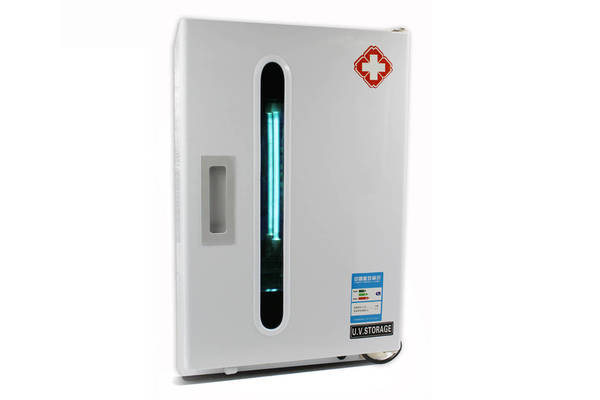Description
This Product use UV light to Kill microorganisms. Sterilize for microorganisms of glasses, Metal and Plastic. Working time 15 minutes is enough to kill the microorganisms on the tools.
It can kill 22/5000 Bacteria such as intestinal bacteria, aspergillus flavus and hepatitis B surface antigen
How effective is UV sterilization? Does it work for bacteria and viruses? What are the pros and cons? These are questions I hear a lot working in the microbiology field, especially when people think about how dirty their cell phone gets. With more and more UV sterilization products coming on the market, you might be wondering if they are worth trying. So, let’s dig in!
UV light has been used for sterilization and disinfection as early as the mid-20th century. With advancements in technology, and specifically in the UV bulbs themselves, its reliable long lifespan (thousands-of-hours) and smaller size (e.g. UV LED vs traditional UV bulbs) has broadened the field for where it can be used. You can find it being used to disinfect: water, air, fruits, vegetables, surgical utensils, tablet computers, toys and a variety of surfaces.
When it comes to UV sterilization, not all kinds of UV are effective. What does that mean? To get a little technical, ultraviolet (UV) means “beyond violet” and refers to a range of electromagnetic waves with a shorter wavelength (higher frequency and energy) than the visible violet light. UV is divided into three types with reducing wavelengths and increasing energy. They are UVA, UVB and UVC. For UV sterilization, only UVC (100-280nm) has high enough energy to effectively kill microorganisms. When you are shopping for a UV sterilization product to try in your home or business, make sure that its UV wavelength falls in the range of UVC (100-280 nm).
Is UV sterilization effective for viruses and bacteria? The short answer is yes, and even more organisms. Studies have shown that UVC at 254 nm is effective against all foodborne pathogens, natural microbiota, molds, and yeasts. Because microorganisms come with different sizes and shapes that affect their UV absorption, the required time for killing each species varies.2
How does UV sterilize something? I’m glad you asked! UV sterilization also known as UV disinfection or ultraviolet germicidal irradiation (UVGI) works by breaking down certain chemical bonds and scrambling the structure of DNA, RNA and proteins, causing a microorganism to be unable to multiply. When a microorganism is unable to multiply, it is considered dead since it cannot reproduce within a host and is no longer infectious.
“Dead.” That sounds perfect. How much time does it take to get this nasty stuff to said “dead” status? Let’s talk destruction specifics. Since UV sterilization uses the energy of UVC to destroy biomolecules, its effectiveness depends on the total energy applied which is affected by the length of exposure time and the distance from the light source. For example, if you use a UV lamp held within 1 inch above a petri dish grown with E. coli, it will only take 1-2 min to show a complete sterilization.1 For sterilizing surgical instruments in a medium UV box, it might take 5-10 min. For sterilizing an 8-foot biosafety cabinet in a lab, a common recommendation is 30 min.
Of course every method of sterilization has its pros and cons. A few are listed in the table below.
| Pros for UV Sterilization | Cons for UV Sterilization |
| It is convenient to use and no chemicals are needed. Therefore you won’t leave any chemical residue behind. | UVC is dangerous to humans. That is why UV sterilization is usually done using UVC lamps with protective shields. Remember to avoid direct exposure to UVC, especially skin and eyes. |
| It is able to kill all kinds of microorganisms, including drug resistant bacteria. | It has a major limit! UV only works in its light path and can be blocked by objects. Make sure what you want sterilized is directly in line with the UV light. You can minimize this issue by using multiple UV bulbs to generate UV irradiation from different angles. |
One other limitation of UV sterilization is that UVC causes so much damage in both proteins and DNA/RNA that they cannot be used for biomedical products. For example, UVC sterilization of viruses causes so much damage to the viruses’ surface proteins that they cannot be used as vaccines to induce proper immune responses. A different kind of “UV inactivation” method is used in biomedical products to preserve viral surface proteins while effectively inactivating viruses. This is also the method we use for our UV inactivated purified virus products because we want to use the intact viral proteins of the UV treated viruses for biomedical use such as generating antibodies.
Finally, whether you are looking for a bot to sterilize your counters, or a wand to wave over sketchy hotel sheets, or a gizmo to sanitize your stinky shoes, UV sterilization is a great option. And remember, following manufacturers’ instructions on light-source distance, exposure time and safety precautions for any device you purchase is essential
Made in China





